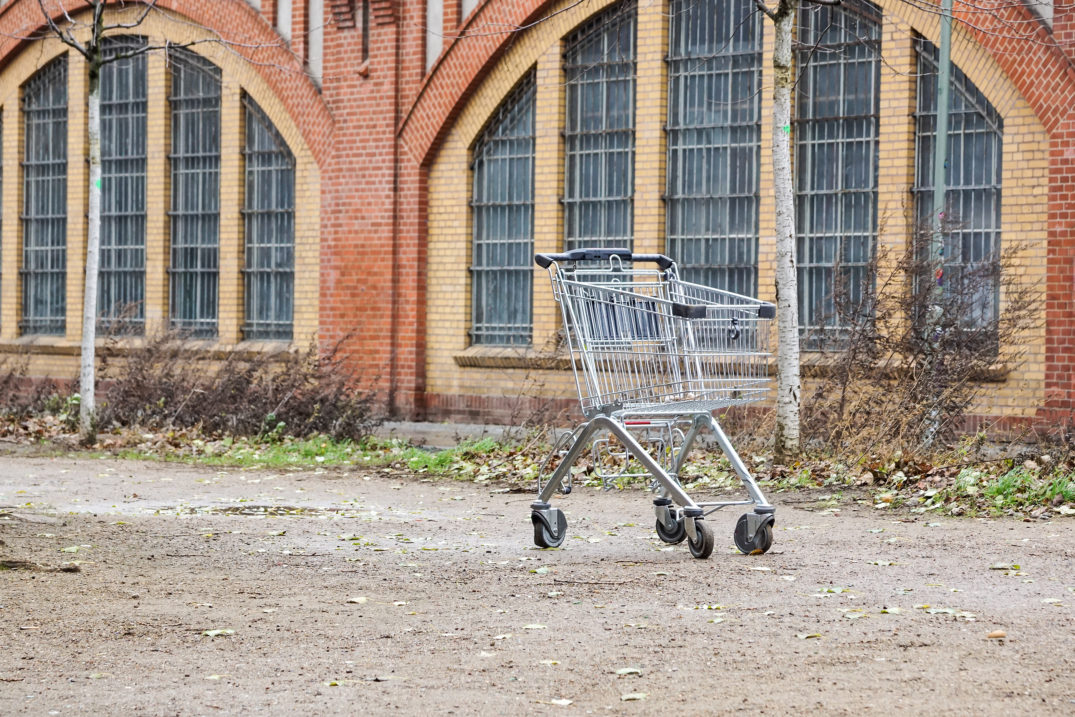With retail locations going bust, malls and shopping centers are ripe for solving one of our biggest problems.

As retail establishments are closing at record rates, America has an expansive problem: a glut of vacant real estate, all designed for parking and shopping. While locations for longtime giants, such as Macy’s, Pier One and Sears, fall by the wayside, experts say the COVID-19 pandemic didn’t create this problem, so much as it was the final nail. In 2019—even ahead of the virus—nearly 10,000 stores went out of business, marking a 59% increase over the prior year. In 2020, that number expanded to more than 15,000, according to the Associated Press.
At the same time, another problem looms alongside retail decline—one that has developers considering malls and other retail centers for housing. As sales among brick-and-mortar establishments plummeted amid the first months of COVID-19, home sales were 17% higher—rising to rates not seen since April 2006. The results were, “stronger than what had been assumed in previous forecasts,” says Robert Dietz, chief economist for the National Association of Home Builders. Too strong, perhaps. While the housing sector was already under-built, Dietz says, now it lags the need for housing by a degree that constitutes a crisis. Consequently, suburban-style strip malls within traditional urban frameworks are quickly falling out of favor with consumers and are prime candidates for large-scale neighborhood revitalization projects.
With populations age 65 and older growing by as much as 10,000 per day, yesterday’s shopping malls look like prime destinations for seniors. The Harvard Joint Center for Housing Studies projects that the number of adults in the U.S. age 65 and older will increase from 48 million to 79 million over the next 20 years, making retail a big opportunity for conversion. The idea also fits with the trend for relocating senior living facilities to more urban areas. “Originally we would be in the suburbs,” says Steve Ruiz, an architect who specializes in senior designs for Moseley Architects. “But we’re seeing a change,” Ruiz adds.
As more firms latch onto the concept, the idea for retail conversion has led to more than 400 proposals nationwide.
Sizing Up Challenges
That’s not to say that retail centers are a shoo-in for housing. Preparing old shopping malls to become mixed-use developments is a creative puzzle, says Dominic Wilker, director of development for Washington Place Equities in Baltimore, an equity investment firm that focuses on multifamily, manufactured housing and senior living. Among the goals for retail-to-residential conversions is the idea for breaking down barriers and reconnecting old retail sites with existing neighborhoods; most retail establishments are set back from major thoroughfares, across sprawling parking lots.
To overcome this and other obstacles, architects lean on several strategies, including options for reinforcement (strengthening or supporting designs with additional development), revival (giving new vitality with selective redevelopment) and restarting (beginning anew with full redevelopment). Aside from restarting, when it comes to working with existing structures, every option comes with significant challenges, Wilker says. You have to learn to improvise, he suggests.
“A rigid mentality doesn’t work on these projects,” he says. “I think flexibility is very important and you have to have the mindset that what you wish was there and what might be there are two different things. I think that requires adaptability and a leadership style that says, ‘Hey, we’re going to figure this out.’ I think trying to take what the site gives you and not fighting it is essential.”
520 Park Avenue
There are times when site plans and existing buildings end up in conflict, Wilker says. For instance, on 520 Park Avenue, a retail site in Baltimore that Wilker’s firm turned into ground-level retail spaces and apartments, the concrete floors didn’t turn out to be quite as “accommodating” for wood as expected. “We walked in that building a hundred times and we’d never really thought about that, but through construction we figured out a way to deal with it,” he says. “That was just the building pushing back on us.” Originally constructed in 1942 as warehousing, the 216,000-square-foot space went through several iterations before becoming a prominent department store in the 1980s. The latest design includes 171 apartments surrounding a courtyard, with double-loaded corridors. And while 520 Park Avenue wasn’t created specifically for seniors, the building’s design and amenities illustrate how the same concept serves the mission of today’s senior living facilities. Among those with ground-floor retail, for instance, “You come there and think, ‘Oh, I think I’ll have a sandwich,’ or ‘Let’s just have something to eat here before we go home,’” Ruiz says. Meanwhile, “Some of the residents are in there, so now you have that interaction that’s going on,” helping to make seniors part of their communities.
Creating those moments, while converting reminders of bygone eras of shopping into vital housing, “Those are gratifying in a way that building another five-story building isn’t,” Wilker says. “It’s an accomplishment.”